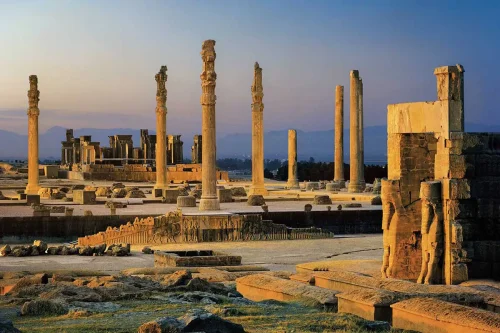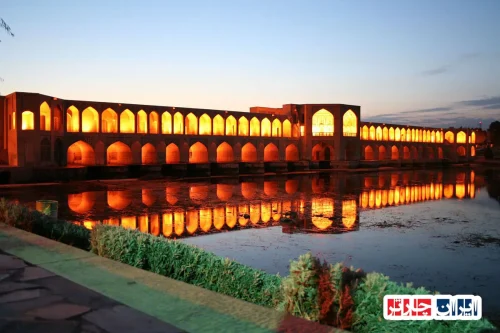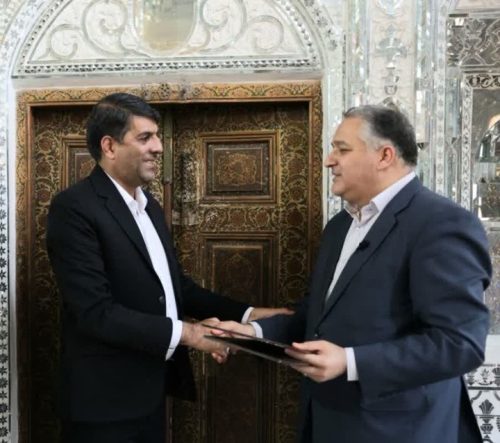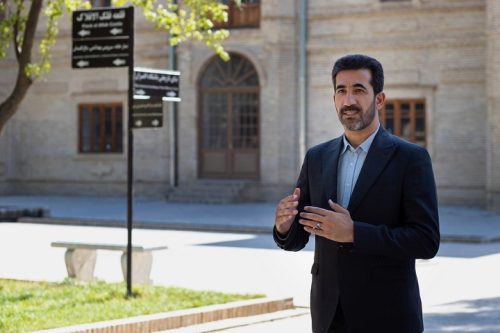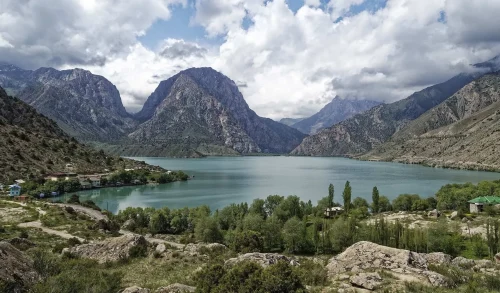News Source : https://www.mehrnews.com/news/6296050/%D8%A7%D8%B2-%D8%B2%D9%86%DA%AF-%D8%AE%D8%B7%D8%B1-%D8%A8%D8%B1%D8%A7%DB%8C-%DB%B3%DB%B0%DB%B0-%D9%85%D9%82%D8%B5%D8%AF-%DA%AF%D8%B1%D8%AF%D8%B4%DA%AF%D8%B1%DB%8C-%D8%AA%D8%A7-%D8%AF%D9%84%D8%A7%DB%8C%D9%84-%DB%8C%DA%A9-%D8%A7%D9%82%D8%AF%D8%A7%D9%85-%D9%81%D9%88%D8%B1%DB%8C-%D8%A8%D8%B1%D8%A7%DB%8C
From the Alarm for 300 Tourism Destinations to the Reasons for Immediate Action in Iran
In Iran’s current crisis conditions, the need for immediate action in the tourism industry is more crucial than ever. The Secretary of the National Green Tourism Committee outlined the “Tourism Emergency Action” plan, emphasizing the need for fundamental changes in tourism practices to confront the current challenges. Due to international issues and some domestic policies, the country faces serious problems in the energy and water sectors, which could negatively impact the tourism industry. For instance, more than 35 electricity consumption records were broken last summer, and the overheating beyond expectations indicates major concerns. If these trends continue, one-third of the country’s required electricity may not be supplied, posing serious problems for tourism businesses. To counter these challenges, a swift plan needs to be devised to direct the current trends towards improving sustainable tourism indicators with minimal complexity and without engaging in bureaucratic administrative systems. This plan should be designed to utilize existing resources in the best possible way and be executable within daily activities without the need for additional financial resources or complex permits. Moreover, the importance of public awareness and promoting responsible behaviors is highly emphasized. This plan should increase the number of green tourists who are more aware and sensitive to their surroundings, striving to minimize the negative impacts of irresponsible behaviors. With the implementation of these urgent plans, Iran can navigate the current crisis and steer its tourism industry towards sustainability and sustainable development.
For more information, please call 021 91091190 or email info@irancharter.ir.
The Impact of Energy and Water Crisis on Iran’s Tourism
In the current conditions of energy crises and water shortage, Iran’s tourism industry is facing serious challenges. Increasing electricity consumption and severe water needs have made optimal resource management essential for tourist destinations. Without resolving these issues, tourists will be less able to enjoy the available facilities, which can have long-term negative effects on the country’s tourism economy. Therefore, immediate action is necessary to optimize the management of energy and water resources in Iran’s tourism industry.
Last Summer’s Power Issues and its Impact on the Tourism Industry
Last summer, Iran experienced record-breaking electricity consumption over 35 times, indicating significant pressure on the country’s energy systems. This increased electricity consumption not only affected economic costs but also disrupted tourism activities. A decrease in visits to tourist destinations due to power fluctuations can reduce the country’s ability to attract both foreign and domestic tourists. Therefore, resolving power issues and ensuring a stable energy supply is essential for the thriving of the tourism industry.
The Necessity of Emergency Planning in the Tourism Industry
Considering the current problems, developing an emergency plan for Iran’s tourism industry seems crucial. This plan should include strategies for managing energy and water crises, increasing efficiency, and reducing the consumption of natural resources. Effective planning can help mitigate existing complexities and prevent negative impacts on tourism. Also, it is important that this plan is implemented without the need for additional funds and within the framework of daily activities to quickly improve the situation.
Challenges in Improving Sustainable Tourism Indicators
To enhance sustainable tourism indicators in Iran, fundamental changes are needed in tourism practices and management. Existing challenges include resource management, environmental protection, and promoting responsible tourist behaviors. Without these changes, sustainable development in the tourism industry cannot be achieved, leaving the country’s environmental and economic problems vulnerable. Therefore, improving sustainable tourism indicators requires collective efforts and coordination among various organizations.
The Importance of Public Awareness and Promoting Green Tourism
Public awareness plays a significant role in the development of green tourism. Green tourists are environmentally conscious and more sensitive to the impacts of their behavior on their surroundings. Promoting green tourism can help reduce the negative impacts of mass tourism and improve environmental conditions. Raising public awareness through educational campaigns and utilizing various media can increase the number of sustainable tourists and aid in the sustainable development of the tourism industry.
Controlling Mass Tourism and Unstable Practices in Iran
Mass and unstable tourism is one of the main challenges of Iran’s tourism industry, requiring precise control and management. Unsafe and unplanned trips can lead to the erosion of natural resources and a decrease in the quality of tourist experiences. By accurately assessing tourism flows and setting appropriate rules and regulations, mass tourism flows can be directed towards sustainable tourism. This requires close collaboration between different organizations and the implementation of coherent policies.
The Role of Knowledge and Management in Sustainable Tourism Development
Effective knowledge and management are key factors for the sustainable development of tourism. Utilizing expert knowledge and optimal resource management can improve the performance of the tourism industry. Training tourism staff and managers in various fields such as crisis management, environmental protection, and promoting responsible behaviors is of utmost importance. Employing new technologies and optimizing processes can also play a significant role in enhancing tourism sustainability.
Immediate Tourism Action Plan and Practical Solutions
Iran’s immediate tourism action plan should include practical solutions for addressing the current crises. This plan can include the optimal use of available resources, reducing energy and water consumption, promoting green tourism, and establishing sustainable infrastructures. Additionally, it should provide solutions to support tourism businesses and create incentives for sustainable tourists. Implementing this plan requires coordination among various sectors and support from senior managers to ensure swift and effective execution.
The Impact of Bureaucratic Systems on the Implementation of Tourism Programs
Bureaucratic systems can be a major obstacle in implementing tourism programs. Complex processes and the need for multiple approvals can slow down the execution of emergency programs and delay improvements in tourism indicators. To solve this problem, simplifying processes and reducing administrative burdens are needed. Creating a flexible administrative framework and effectively supporting implementation programs can accelerate necessary actions and lead to the thriving of Iran’s tourism industry.
FAQ
- What is the Immediate Tourism Action Plan and why is it necessary for Iran?
- The Immediate Tourism Action Plan is an emergency program designed to improve sustainable tourism indicators in Iran. This plan is necessary due to serious issues in the energy and water sectors, as well as climate changes and internal and international policies impacting the tourism industry, making it essential for the preservation and development of Iran’s tourism industry.
- What issues have necessitated Iran to draft this plan?
- International issues and internal policies, serious problems in the energy and water sector, high electricity consumption in the tourism industry, unexpected climate warming, and instability in tourism indicators are some of the factors that have led Iran to draft the Immediate Tourism Action Plan.
- Who is Mohammad Jahanshahi and what role does he play in the Immediate Tourism Action Plan?
- Mohammad Jahanshahi is the Secretary of the National Committee for Ecotourism and Green Tourism, who has been responsible for drafting the Immediate Tourism Action Plan for Iran for the first time and has sent this plan to the relevant offices.
- How is electricity consumption in Iran’s tourism industry and what impact does it have?
- Electricity consumption in Iran’s tourism industry, alongside energy issues, is very high. Last summer saw over 35 record-breaking instances of electricity consumption, and overheating beyond expectations is expected to cause future electricity production imbalance. This issue can pose serious problems for tourism businesses.
- What is green tourism and how can it aid in sustainable tourism in Iran?
- Green tourism is a type of tourism chosen by environmentally conscious tourists who aim to minimize their negative impacts on natural, cultural, and social environments. By raising public awareness and promoting responsible behaviors, this type of tourism can help in sustaining the tourism industry in Iran.
- Why are 90 percent of travel flows in Iran outside the standard framework?
- About 90 percent of travel flows in Iran occur outside minimal standard frameworks because most trips are carried out without organized and systematic planning. This leads to the formation of mass and unsustainable tourism, requiring further reform and organization.
- How can the Immediate Tourism Action Plan solve existing issues?
- The plan aims to steer current tourism trends towards sustainability by drafting simple strategies without the need for complex bureaucracy. Through changing current practices, improving resource management, and raising public awareness, the Immediate Action Plan can mitigate energy, water, and tourism instability issues.
- What does sustainable mass tourism mean and how can it be implemented?
- Sustainable mass tourism means continuing mass tourism while adhering to sustainable principles. This type of tourism promotes sustainability indicators through legal capacity, expert knowledge, and enhanced public perception. With appropriate management and regular planning, mass tourism can be directed towards sustainability.
- What have field assessments in over 300 tourist destinations shown?
- Field assessments in over 300 tourist destinations in Iran, including villages, beaches, islands, and natural areas, have clearly shown signs of unsustainability. These results indicate an urgent need to increase public awareness and promote responsible behaviors for creating green and sustainable tourism.
- What is the role of senior managers and advisors in executing the Immediate Tourism Action Plan?
- Senior managers and advisors have a supportive and guaranteeing role in executing the Immediate Tourism Action Plan. Their presence and support act as a cornerstone, making the effective execution of this plan possible, and without which, the plan will not be executed.
- What issues in Iran’s tourism infrastructure lead to instability?
- Land use changes, land grabbing, the destruction of architectural structures, and behavioral pattern changes are infrastructural problems in Iran’s tourism that lead to increased instability and create serious challenges in the country’s planning system.
- On what principles is the Immediate Tourism Action Plan based?
- This plan emphasizes simplifying tasks without the need for complex bureaucracy and integrating activities within a daily framework. It also focuses on sustainable development, resource management, and raising public awareness to create sustainable tourism.
- How can public awareness towards green tourism be increased?
- Increasing public awareness through promoting responsible behaviors, using media for information dissemination, educating tourists about the importance of environmental conservation, and enhancing expert knowledge among tourism officials can aid in increasing green tourism.
- How do tourism projects in Iran fail to aid sustainability?
- More than 3500 tourism projects are underway, primarily following past approaches of second and third generation constructions. These projects neglect green building principles, zero carbon, and optimized water and energy use, failing to aid tourism sustainability.
- What measures are being taken to reduce energy and water issues in the tourism industry?
- The Immediate Tourism Action Plan emphasizes optimizing energy and water consumption, using advanced technologies such as nanotechnology, and improving green buildings to reduce energy and water issues in the tourism industry.
- Why will the Immediate Tourism Action Plan be ineffective if implementers do not believe in it?
- If the implementers of the Immediate Tourism Action Plan do not believe in it and do not take the measures seriously, the plan will not be executed. This results in the continuation of current trends with high costs and low efficiency, further adversely affecting tourism sustainability.
- What is the difference between unstable mass tourism and sustainable mass tourism?
- Unstable mass tourism results from tourism development in areas without systematic oversight and control, while sustainable mass tourism follows sustainability indicators and resource management in an organized manner.
- How does the Immediate Tourism Action Plan prevent complex bureaucracy?
- The plan aims to prevent complex bureaucracy by designing straightforward strategies and executing actions in the shortest time using direct routes. This allows for necessary changes without entanglement in administrative systems.
- What is the role of human capital in sustainable tourism development?
- Efficient human capital with basic awareness and readiness plays a crucial role in planning, managing, and implementing sustainable tourism development models. People with the right knowledge and skills can guide tourism trends towards sustainability.
- How can changing current tourism practices improve sustainability indicators?
- By changing current practices and implementing the Immediate Tourism Action Plan, resource management can be improved, energy and water consumption can be reduced, and more responsible behaviors can be cultivated among tourists and tourism industry players, ultimately improving sustainability indicators.
- How does the evolution of tourism genres into new generations affect the industry?
- By transitioning from the sixth to the seventh generation and utilizing new knowledge and nanotechnology, tourism buildings and facilities can move towards green and zero-carbon buildings. This change aids sustainability and reduces water and energy consumption.
- How can the Immediate Tourism Action Plan direct tourism flows towards more sustainable patterns?
- The Immediate Action Plan can direct tourism flows towards more sustainable patterns suitable for the local environment and systems by establishing internal sustainability indicators, utilizing existing capacities, and improving managerial and planning processes.
- What is the importance of support from senior managers and advisors in effective implementation of the Immediate Action Plan?
- Support from senior managers and advisors as a cornerstone is a guarantee for implementing actions within the Immediate Action Plan effectively. Without their support and belief in the plan, effective implementation is not feasible.


